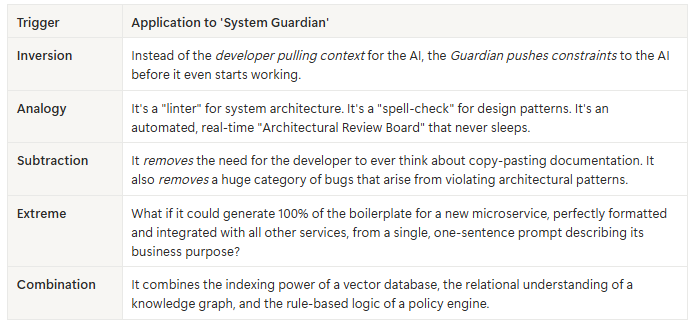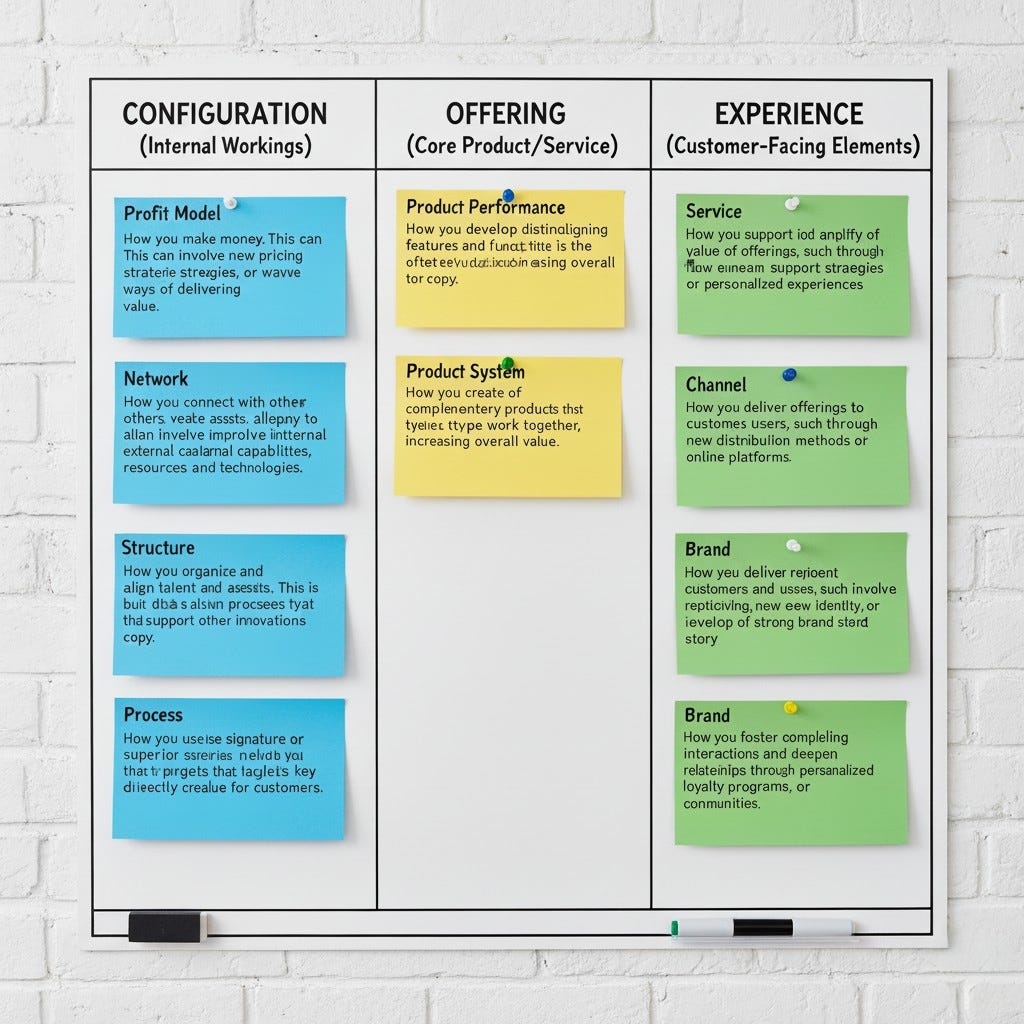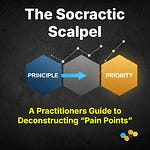Innovator’s Note: The startup graveyard is the greatest classroom for an innovator. While headlines celebrate the unicorns, the most valuable lessons are buried with the failures. In this series, I perform critical analyses and pre-/post-mortems. By dissecting why seemingly “can’t-miss” companies from top accelerators went - or could possibly go - under, we’ll uncover the patterns of collapse—from flawed business models to fatal product assumptions—to help you build something that lasts.
Table of Contents
Introduction: The Gravity of the Obvious Problem
Part I: Deconstruction — Separating the Symptom from the Disease
Part II: Reconstruction — Defining and Solving the Real Job
Part III: Strategy — Architecting an Unbreachable Moat
Conclusion: A Call for More Architects, Fewer Bricklayers
Introduction: The Gravity of the Obvious Problem
When a teenage solo founder like Arlan Rakhmetzhanov not only gets into Y Combinator but raises an oversubscribed seed round with backing from luminaries like Paul Graham (he blocked me 😆), you know they’re working on something real. Nozomio, an Applied AI Research Lab, is aimed squarely at one of the most talked-about frustrations in the new era of software development: the “context problem.”
Website: https://www.trynia.ai/
Ask any developer who uses an AI coding agent like Cursor or an in-IDE assistant, and they’ll tell you the same story. The AI is brilliant at generating boilerplate or solving isolated algorithmic challenges. But the moment you need it to understand the intricate web of your company’s private codebase—its unique patterns, its legacy services, its multi-repository dependencies—it develops a severe case of amnesia. You find yourself painstakingly spoon-feeding it documentation, API schemas, and relevant code snippets, turning what was supposed to be a jetpack into a pogo stick.
Nozomio’s flagship product, Nia, is an elegant solution to this very problem. It’s a “context augmentation layer” that indexes all of your disparate sources of information, creating an external memory for the AI. It’s a smart, technically impressive, and necessary tool.
And that’s precisely what makes it so dangerous from a strategic perspective.
The most dangerous problems for a startup aren’t the hidden ones; they’re the ones that are painfully obvious. Obvious problems attract a crowd. They invite dozens of smart people to build clever, technically impressive, and feature-level solutions. But “features” don’t build enduring companies. Defensible moats do.
True, defensible businesses are rarely built by solving the problem everyone sees. They’re built by having the intellectual discipline to deconstruct that obvious problem down to its non-obvious root cause and then architecting a holistic system to solve that.
This post is a practical guide to that exact process. We’re going to use Nozomio as our live case study to walk through a rigorous strategic framework. We will:
Deconstruct the “context problem” using First Principles to find the real disease, not just the symptom.
Reconstruct a more powerful solution from the ground up using the Jobs-to-be-Done framework.
Strategize on how to build an unbreachable competitive moat around that new solution using Doblin’s 10 Types of Innovation.
This isn’t just an academic exercise. It’s a blueprint for building a company that can’t be easily copied or marginalized. It’s the kind of foundational thinking that accelerators, in their rush for velocity, often overlook. Let’s begin.
Part I: Deconstruction — Separating the Symptom from the Disease
To find a truly non-obvious insight, you can’t just accept the problem as it’s presented to you. You have to attack it, question it, and break it into its constituent parts until you’re left with only fundamental truths.
The Surface Problem: AI’s Contextual Amnesia
Let’s start by empathizing with the pain. A senior developer, “Alex,” is tasked with adding a new billing feature to a sprawling microservices architecture. The company uses Stripe, has a custom user authentication service, a separate promotions engine, and its own internal logging format.
Alex prompts the AI: “Scaffold a new endpoint in the billing service that accepts a user ID and a promotion code, validates the code with the promotions service, and creates a new Stripe checkout session.”
The AI, trained on the entire public internet, generates syntactically perfect code. It uses the public Stripe API, a generic authentication pattern, and standard logging. It’s all wrong. The code doesn’t know about the company’s internal gRPC wrapper for the promotions service, the custom JWT token format, or the required structured JSON for logs.
Alex spends the next 45 minutes opening different files, copying and pasting internal API definitions, utility functions, and documentation links into the AI’s chat window. The “assistant” has become the intern Alex has to micromanage. The developer’s precious “flow state”—that magical zone of deep, productive focus—is shattered. This is the obvious, painful problem Nozomio is solving. It’s real, and fixing it provides real value. But why is it the problem?
Applying the Scalpel of First Principles
Let’s apply some structured questioning to dig deeper. Socratic questioning is a technique for challenging assumptions by asking a disciplined series of questions.
Question 1: What is the fundamental problem Nozomio claims to solve?
Initial Answer: AI coding agents lack context about private codebases.
Question 2: Why is that a problem for developers?
Answer: Because developers have to waste time manually finding and feeding this context to the AI.
Question 3: Why is this manual work so painful?
Answer: It’s slow, it’s prone to errors (you might forget a key detail), and it constantly breaks your concentration.
Question 4: Why is preserving concentration, or “flow state,” the most important thing to optimize for?
Answer: Because software development is not typing; it’s a creative act of problem-solving. It requires holding a complex mental model of a system in your head. Interruptions force you to rebuild that model from scratch, which is mentally taxing and dramatically slows down progress on the actual work of designing logic.
Question 5: So, the goal is to eliminate any task that forces the developer to “context switch” away from architectural thinking. What is the true nature of the context the AI is missing?
Answer: It’s not just a list of files or API signatures. It’s a set of unwritten rules, patterns, preferences, and philosophies. It’s the “way we do things here.” It’s the project’s constitution.
This line of questioning already shifts our perspective. The problem isn’t just about data retrieval; it’s about preserving a developer’s creative energy. The “context” isn’t just information; it’s a system of principles.
A Forensic Investigation with the Five Whys
Let’s use a complementary technique, the Five Whys, to drill down to the mechanical root cause.
1. Why do developers waste time feeding context to AI agents?
Because the AI agents, by default, don’t have knowledge of the specific project’s architecture, dependencies, and internal patterns.
2. Why don’t they have this knowledge?
Because they are large, general models trained on massive, public datasets (like GitHub’s public repositories). They have no inherent access to or training on a company’s private, dynamic, and often unique codebase.
3. Why is it so hard to just “give” them this knowledge?
Because indexing and retrieving information from a constantly changing, multi-repository environment is a complex technical challenge. Code is not static like a PDF. Its meaning is derived from its relationship to other pieces of code. This is the technical problem that Nozomio’s Nia is solving with its “context augmentation layer.” But we must keep asking why.
4. Why isn’t solving this retrieval problem the complete solution?
Because there is a massive gap between retrieval and application. Giving a human a 500-page legal textbook doesn’t mean they can write a legally sound contract. Similarly, giving an AI access to a repository of code doesn’t mean it “understands” the architectural principles that governed its creation. It can see what was done, but not why it was done that way.
5. Why is this gap between retrieval and application the real root of the problem?
Because the fundamental job of a senior developer isn’t just to write code; it’s to write code that complies with the system’s established architecture and best practices. The highest-order task is to ensure the system remains coherent, scalable, and maintainable. The AI’s failure is not a failure of memory (I can’t find the file); it’s a failure of governance (I don’t know the rules I must follow).
The Root Cause: The core problem is not a lack of information, but the absence of an enforced “constitution.”
Every mature codebase has a constitution—a set of explicit and implicit rules about design patterns, data modeling, error handling, security, and style. This constitution is what separates a professional, scalable system from a chaotic prototype. Nozomio’s current solution gives the AI a library card to access the constitution. A truly disruptive solution would give the AI a law degree and empower it to act as a judge, ensuring every line of new code adheres to that constitution.
Part II: Reconstruction — Defining and Solving the Real Job
Now that we’ve deconstructed the problem to its foundational truth, we can rebuild a much more powerful solution. To do this, we’ll use the Jobs-to-be-Done (JTBD) framework, which focuses on the customer’s underlying motivation, not their surface-level request.
From User Story to Job Story
A typical, feature-focused “user story” for Nozomio would be:
“As a developer, I want to provide context to my AI so that it can generate more accurate code.”
This is weak. It focuses on the user’s interaction with a specific solution. It’s a request for a faster horse.
A JTBD “Job Story,” however, frames the situation, the motivation, and the desired outcome:
“When I am tasked with building a complex feature under a tight deadline, I want to delegate the initial code generation to an AI and feel confident that the output will automatically align with our established architectural patterns and best practices, so I can focus my mental energy on higher-level logic and ship a robust solution faster.”
This reframing is a superpower.
It’s solution-agnostic. It doesn’t mention “context” or “layers.”
It clarifies the real competitor: manual coding and meticulous human review.
It reveals the desired future-state: not just “more accurate code,” but confident delegation. The goal is to elevate the developer from a micromanager to a trusted architect who can hand off work and know it will be done right.
Elevating the Level of Abstraction: The Future of AI-Native Development
With this new Job in mind, how could we build a solution that gets it done completely?
Working Today (But Few Are Doing Well): The next logical step beyond simple vector search (which Nozomio does) is to build knowledge graphs. Instead of just indexing files, a knowledge graph understands the relationships between them. It knows that
Service AcallsService BviagRPC, that theUsermodel is the source of truth for authentication, and that a change inModule Cwill have downstream effects onModule D. This moves from raw retrieval to relational understanding, a much closer approximation of how a senior developer thinks.Novel Concept (Gets the Job Done Differently & Better): The “System Guardian.”
This is the reconstruction of Nozomio based on our first principles analysis. The System Guardian is not a passive tool the developer uses; it’s an active system the developer collaborates with.
Imagine this workflow:
Codify the Constitution: During onboarding, a company doesn’t just point the Guardian at its repos. It works with the system to explicitly define its architectural constitution. “We use the Repository pattern for data access.” “All external API calls must go through this specific client with retries.” “Logs must be in JSON format with these specific keys.”
Proactive Enforcement: When a developer prompts their AI agent—”scaffold the new billing endpoint”—the Guardian intercepts this prompt.
Guided Generation: The Guardian provides the AI agent not just with “context files” but with a set of constraints and instructions. It essentially “briefs” the AI: “You will generate code for this task. It must use the
InternalStripeClient, it must call thegRPC PromotionsValidator, and it must emit logs using theStructuredLoggerclass. Here are examples of each. Proceed.”Automated Review: The AI generates the code. Before it even appears in the developer’s IDE, the Guardian reviews it against the constitution. If it complies, the code appears. If it violates a rule (e.g., tries to call the public Stripe API directly), it either corrects the code automatically or alerts the developer with a specific, actionable suggestion.
This system gets the real job done. It achieves confident delegation. It transforms the AI from a clever but unreliable intern into a perfectly compliant junior developer. It eliminates not just the context-finding work, but the even more burdensome context-verifying work (i.e., code review).
Creativity Triggers for the ‘System Guardian’
How do we know this isn’t just a fantasy? We can use creativity triggers to ground the concept.
Part III: Strategy — Architecting an Unbreachable Moat
A brilliant product concept is not a business. A business needs a defensible moat that prevents fast-followers from stealing your market. Here’s how we architect one for our “System Guardian” platform.
The North Star: Why ‘Core Market Disruption’ is the Path
First, we need a strategic direction. We aren’t creating a new, niche category called “AI context providers.” That’s a red ocean waiting to happen. Our strategy is Core Market Disruption. We are fundamentally changing the core workflow within the existing, multi-trillion-dollar market of enterprise software development. We are changing how code is written, reviewed, and maintained. This framing elevates the ambition and clarifies the mission.
The Blueprint for a Moat: A Tactical Application of Doblin’s 10 Types of Innovation
A strategy is just a wish without tactical execution. Doblin’s 10 Types of Innovation is a framework that helps us think holistically about building a defensible system. A strong moat is rarely just one thing; it’s a combination of mutually reinforcing innovations. We’ll group them into three categories.
Configuration Innovations (The Business’s Foundation)
These are innovations in how the company is structured and makes money. They are often invisible to the end-user but incredibly hard for competitors to copy.
Profit Model: Forget per-seat pricing. That’s a race to the bottom. The Guardian’s value isn’t tied to how many developers use it, but to the complexity and value of the codebase it protects. A better model is tiered pricing based on the number of rules in the “constitution,” the number of services it manages, or even a percentage of the value it creates (e.g., reduction in bugs or increase in deployment frequency). This aligns your revenue directly with customer value.
Network: This is the killer moat. Create a “Constitution Marketplace.” Allow companies to publish and even sell templates for their constitutions. Imagine “The Official Vercel Next.js App Router Constitution” or “The Google Cloud Microservices Best Practices Constitution.” Suddenly, your platform becomes more valuable with each new user who contributes a template. This creates powerful network effects that are nearly impossible for a new entrant to overcome.
Structure: Organize your company around talent that competitors don’t have. Instead of just sales engineers, hire “AI Architects”—a hybrid role of elite developer and consultant. Their job is to help enterprise clients codify their implicit development philosophies into an explicit constitution. This human-in-the-loop onboarding process creates immense customer stickiness and a deep understanding of your customers’ needs.
Process: This is your secret sauce. Develop a proprietary, patentable AI/ML process for inferring a codebase’s constitution automatically. Your system should be able to analyze a decade-old monolith and suggest a draft constitution based on the patterns it observes. This turns a complex onboarding process into a magical “click-a-button” experience and becomes a core, inimitable technological asset.
Offering Innovations (The Product Itself)
These are innovations in the product or service you sell.
Product Performance: The Guardian’s performance isn’t measured by the speed of context retrieval. It’s measured by the quality and compliance of the AI-generated code. Your key metric becomes “percentage of generated code that passes CI/CD on the first try” or “reduction in architectural drift over time.” This focuses on the outcome, not the feature.
Product System: The “System Guardian” isn’t a single product. It’s an ecosystem. It includes:
The core Guardian Engine that learns and enforces the constitution.
The IDE Plugin where developers interact with it.
The CI/CD Hook that acts as a final gatekeeper before deployment.
The Constitution Marketplace for sharing and discovering best practices.
Each part of the system makes the others more valuable, creating a cohesive platform that’s much harder to compete with than a standalone tool.
Experience Innovations (The Customer’s Reality)
These innovations focus on how you interact with your customers, creating a brand and relationship that transcends features.
Service: The “AI Architect” onboarding is a prime example. You’re not just selling software; you’re selling a transformation in how a company builds software. This high-touch service for enterprise clients builds deep, consultative relationships and makes your product incredibly sticky.
Channel: Forge exclusive partnerships to become the default “architectural enforcer” for major platforms. Imagine a world where creating a new repository on GitHub Enterprise gives you a checkbox: “Enable System Guardian with the recommended constitution.” This makes you the default choice and raises the barrier to entry for competitors.
Brand: Build a brand that stands for something more than just a tool. Nozomio’s new brand shouldn’t be about “better context.” It should be about “Confident AI Delegation” or “Architectural Integrity as a Service.” You’re not selling a productivity hack; you’re selling peace of mind to CTOs and engineering leaders.
Customer Engagement: Foster a community where engineering leaders and principal engineers share best practices for codifying and evolving their development philosophies. Host forums, workshops, and publish content that establishes you as the definitive thought leader in the new era of AI-native software development.
Conclusion: A Call for More Architects, Fewer Bricklayers
We started with Nozomio’s elegant solution to an obvious problem: a “context augmentation layer.” By deconstructing that problem to its root cause, we discovered a much deeper, more valuable job: the need for “confident delegation” through an enforced architectural “constitution.”
From that insight, we reconstructed a new product concept—the “System Guardian”—and then used a holistic innovation framework to architect a defensible business model around it. We went from a feature to a platform, from a tool to a system, from a product to a business.
This is the process that matters. The accelerator model’s emphasis on speed and traction is a superpower, but it can create a dangerous blind spot, prioritizing the quick validation of a feature over the patient construction of a moat. Founders must pair that velocity with the discipline of foundational, first-principles thinking.
Nozomio and its founder are clearly brilliant. They have the talent and the momentum. By taking a step back to ask “why” one more time, they have the opportunity to stop selling a better shovel and start selling automated earthmovers. They can pivot from building a useful tool to building an enduring institution that defines the future of how software is made.
That is the difference between being a bricklayer and being the architect.
For a more visual, 12-minute summary of this framework, watch our companion video on YouTube. And if you’re a founder, operator, or investor who believes in building this way, subscribe to this newsletter for more in-depth teardowns.
Follow me on 𝕏: https://x.com/mikeboysen
If you’re interested in inventing the future as opposed to fiddling around the edges, feel free to contact me. My availability is limited.
Mike Boysen - www.pjtbd.comDe-Risk Your Next Big Idea
Masterclass: Heavily Discounted $67
My Blog: https://jtbd.one
Book an appointment: https://pjtbd.com/book-mike
Join our community: https://pjtbd.com/join












